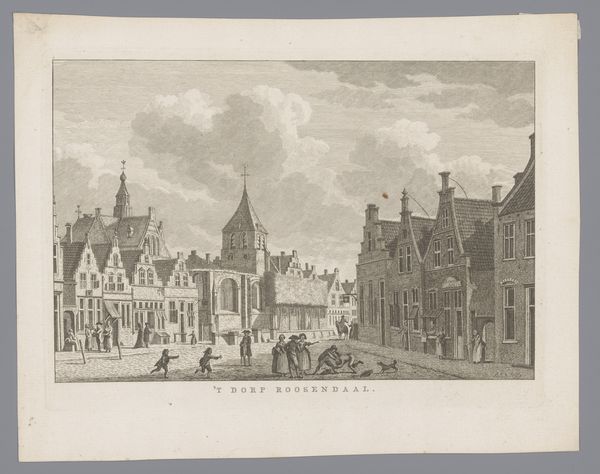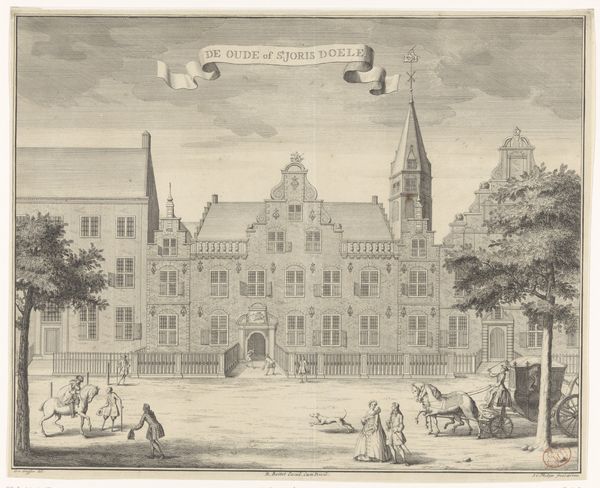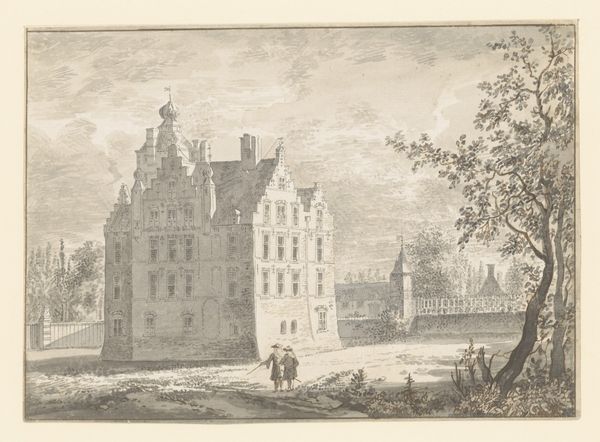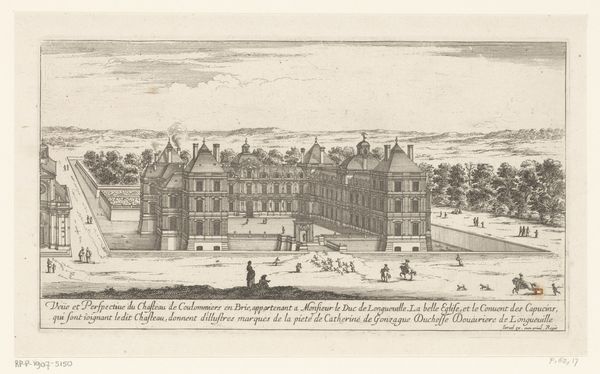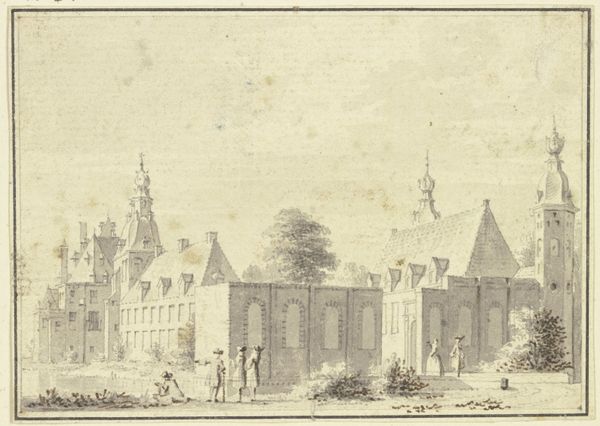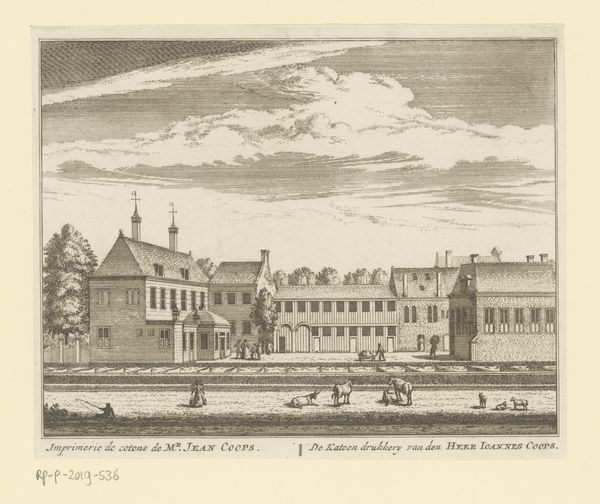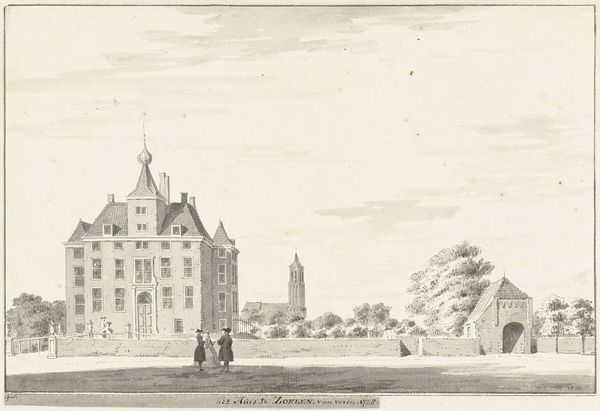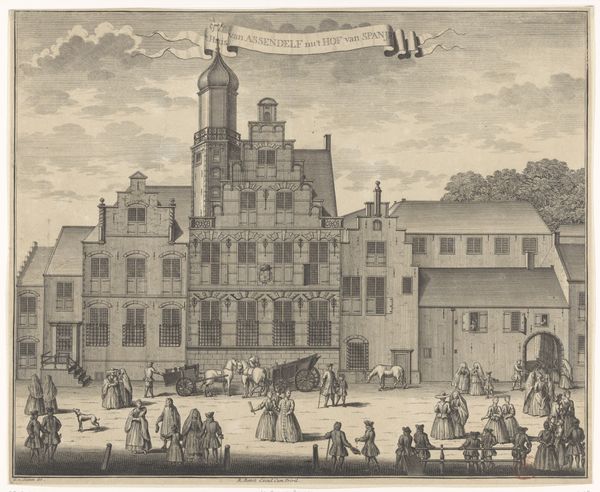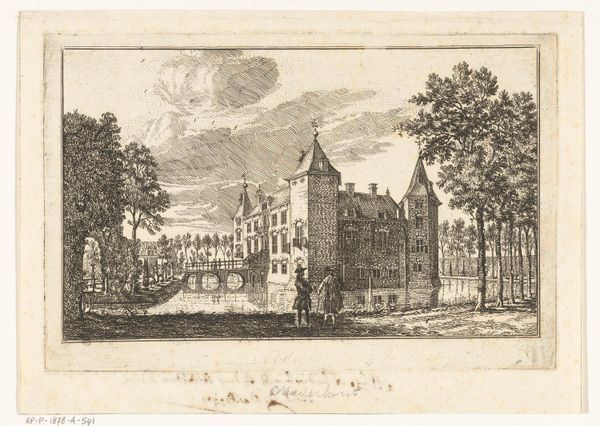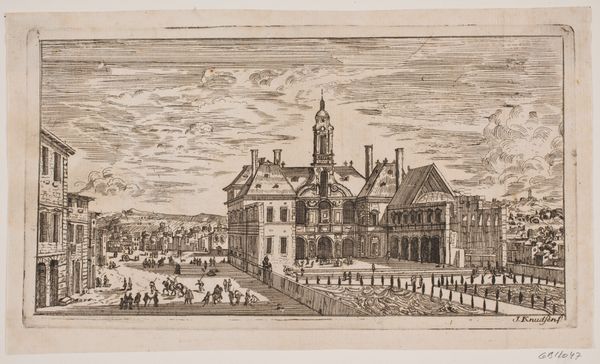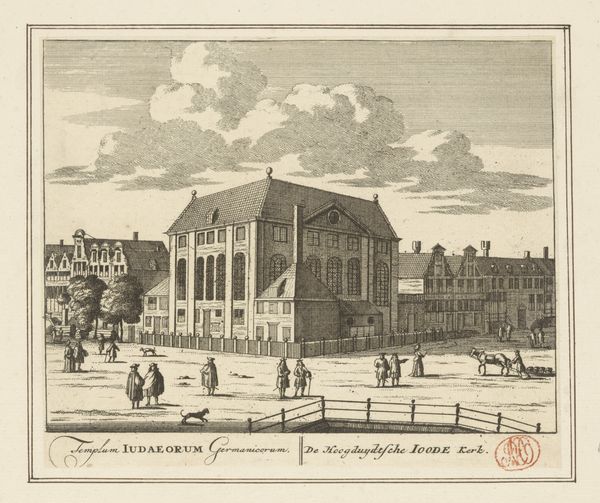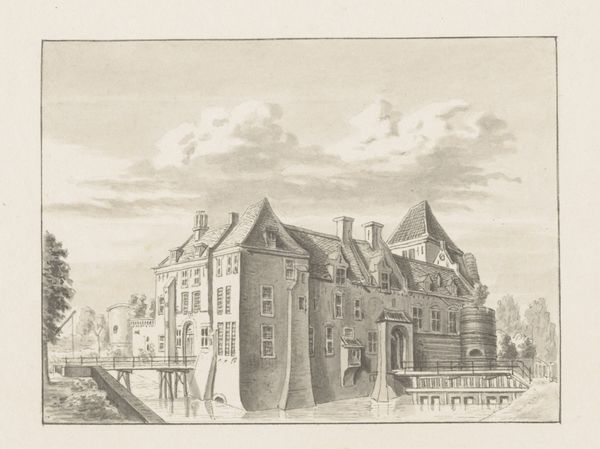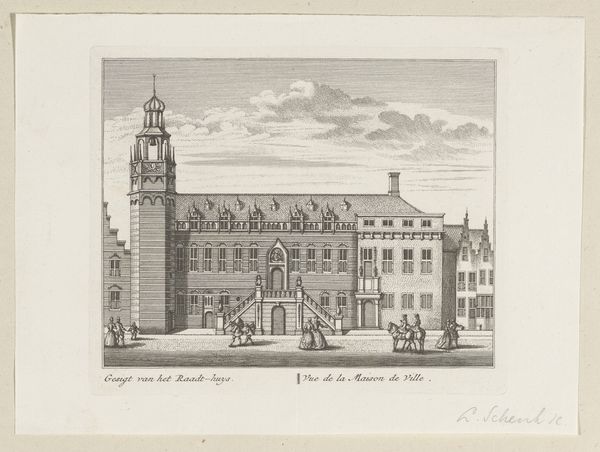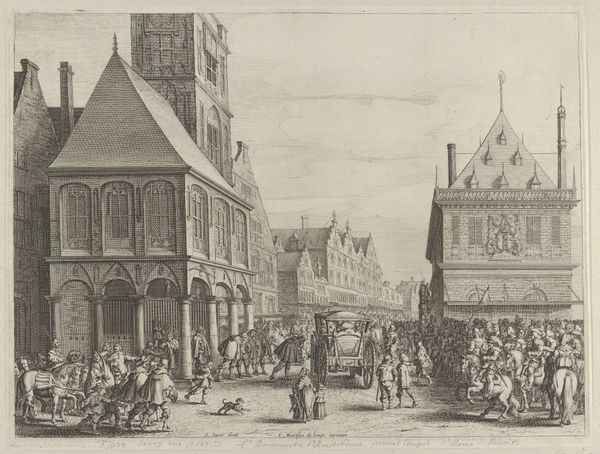
Gezicht op het stadhuis, de waag en de vleeshal te Gorinchem 1754
0:00
0:00
print, engraving
#
baroque
#
dutch-golden-age
# print
#
cityscape
#
engraving
Dimensions: height 274 mm, width 356 mm
Copyright: Rijks Museum: Open Domain
Curator: We’re looking at a cityscape today, “View of the Town Hall, Weigh House, and Meat Market in Gorinchem” by Jan Caspar Philips, dating to 1754. The artwork, a print made through engraving, depicts a bustling town square in the Netherlands. Editor: My immediate impression is one of formal order, a classical rendering that brings to mind a rational social hierarchy with emphasis on architecture. The sky’s even neatly striated! Curator: Absolutely. Philips uses the precise lines of engraving to establish a very rigid structure, a balance that conveys a sense of stability and civic pride. You can feel this is a Dutch Golden Age echo despite it coming almost a century later, still very concerned with order. Editor: The symmetry does speak to the visual language of power—the building itself, which merges civic and commercial functions, becomes an icon. The weigh house reminds us this place has regulated exchange happening. It’s more than just pretty stone, it’s about social constructs literally made of brick and mortar. Curator: Philips also uses contrast expertly. The detailed facade of the buildings stands out against the more open space of the square itself. This highlights architectural geometry against human activity, as the light defines those volumes with razor sharpness. The clouds above mimic that contrast with distinct light and shadow areas. Editor: And the figures themselves—small but dignified—they reinforce the sense of an ordered society. See how some carry weapons; are they city watch? Are they local nobility? Even the horse carriage seems placed as if carefully posed. Everything contributes to the visual program that promotes societal values, visually encoding those values in this composition. Curator: The material qualities—the smoothness of the print, the precision of the lines—reflect and support this sense of control, wouldn't you agree? Editor: Entirely. This work is not just a view, it’s a declaration. It presents us with not only an image of buildings, but the visualization of a social ideal of a very precise time, caught perfectly within an array of very refined linear patterns. Curator: The image lingers in the memory, presenting a compelling architectural view that represents cultural beliefs and practices, something well observed and presented through a master's hand. Editor: Yes, and it makes you think about what we choose to depict and preserve, as symbols of value and governance.
Comments
No comments
Be the first to comment and join the conversation on the ultimate creative platform.
